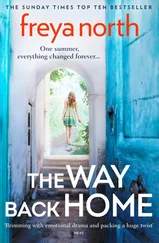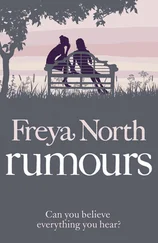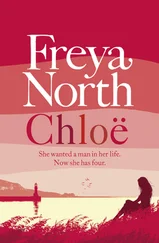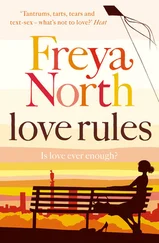Freya North - Pip
Здесь есть возможность читать онлайн «Freya North - Pip» — ознакомительный отрывок электронной книги совершенно бесплатно, а после прочтения отрывка купить полную версию. В некоторых случаях можно слушать аудио, скачать через торрент в формате fb2 и присутствует краткое содержание. Жанр: unrecognised, на английском языке. Описание произведения, (предисловие) а так же отзывы посетителей доступны на портале библиотеки ЛибКат.
- Название:Pip
- Автор:
- Жанр:
- Год:неизвестен
- ISBN:нет данных
- Рейтинг книги:5 / 5. Голосов: 1
-
Избранное:Добавить в избранное
- Отзывы:
-
Ваша оценка:
- 100
- 1
- 2
- 3
- 4
- 5
Pip: краткое содержание, описание и аннотация
Предлагаем к чтению аннотацию, описание, краткое содержание или предисловие (зависит от того, что написал сам автор книги «Pip»). Если вы не нашли необходимую информацию о книге — напишите в комментариях, мы постараемся отыскать её.
Pip — читать онлайн ознакомительный отрывок
Ниже представлен текст книги, разбитый по страницам. Система сохранения места последней прочитанной страницы, позволяет с удобством читать онлайн бесплатно книгу «Pip», без необходимости каждый раз заново искать на чём Вы остановились. Поставьте закладку, и сможете в любой момент перейти на страницу, на которой закончили чтение.
Интервал:
Закладка:
You could have a lie-in, Pip.
Me? God, no. If I have spare time, why on earth fill it with doing nothing? I have loads to do. I can find loads to do.
Can you face being horizontal?
Let me see. Not too bad.
Are you all right in the dark?
Yes. I’m not afraid of the dark.
Pip is in bed. Lying still in the dark. She loves her bedroom. No clutter. Walls the colour of oyster mushrooms. Thick curtains the colour of crème caramel and behind them, cream roller blinds at the window the colour of cappuccino froth. She bought the blinds in the Habitat sale; the curtains were a freebie from a set-designer friend of hers. They had been on a BBC costume drama and had required a fair bit of deft needlework from Pip. The blisters and pricked fingertips had been a small price to pay for such hallowed curtains. She laid the carpet herself. It doesn’t quite fit but her strategically placed furniture hides this from view. It looks like sisal but is much kinder to bare feet. The massive rusty stain that enabled Pip to purchase it for less than a quarter of the price is conveniently straddled by her bed. Her bed has a birch, Shaker-style headboard, very simply panelled and beautifully made. She picked that up for next to nothing as it had a split right through it. But she worked with wood filler and sandpaper and stain; it took her a month, but now you can’t see the join.
However, what she loves most of all about her bedroom is something she had to pay full price for – indeed, over the odds – and that is the remarkable quiet considering her flat’s proximity to Kentish Town Road. This had cost her the asking price for the flat two years ago. Though most of her pennies go straight towards the mortgage and Camden Council’s absurdly high council tax, she doesn’t begrudge a penny. It might be a small space subdivided by stud walls, but it is her own place, her haven, and she loves it.
Pip submits herself to the stillness and silence and stares upwards to where the ceiling ought to be though she can’t determine its surface in the darkness. She tells herself it is now Friday, that Thursday was indeed yesterday. But in effect, it still feels very much Thursday that she is closing her eyes and going to sleep from. Right now, her evening with Megan doesn’t seem as current as the afternoon preceding it. Sure, Megan and she talked about life, love and the universe. And vibrators. But none have the resonance of her afternoon.
‘Night-night, little ones,’ she says out loud, ‘see you next week.’
FIVE
George Saunders is nine years old. He is into his sixth month on Reynolds, the renal ward at St Beatrix’s, the children’s hospital in the City affectionately known at St Bea’s. He’s uncomfortable and fed up. And now he’s agreed to having his eyes tested because they’re about the only part of him that haven’t been tested. He thinks they’re fine. But he wouldn’t be surprised if they’re poorly. Everything else seems to be.
‘Well, here we go, then,’ the doctor says. ‘Cover your left eye – that’s right – what? Yes, I know it’s your left one – I said that’s right, right? Good, use that hand, right? Or that one, left – we’re not testing your hands, are we? Right. Left! Whatever. Ho-hum. Just shut that eye and tell me what’s written on this card.’
George stares at the card held in front of him.
i
‘i,’ says George.
The doctor is making those stern contemplative muttering sounds that they are famous for. ‘Right. Now please cover your right eye with the other hand. Lovely. Can you tell me what’s written on this card?’ Another card is held in front of George. He looks at it, then looks at the doctor. He really doesn’t want to smile but invisible magnets haul the corners of his mouth up towards the mobiles dangling from the ward’s ceiling. He reads the card again.
I
‘Um, i,’ he says, stifling a giggle.
The doctor looks at him sternly. Regards his mother, too. And nods sagely at the ward sister who is hovering. ‘I declare that there is absolutely nothing whatsoever wrong with this young man’s “i”s,’ the doctor says. And then the doctor takes out a hammer and starts bashing George’s arms. George giggles as the hammer makes funny beeps and dongs on impact. After all, the tool is made of red and yellow plastic and is light as a feather. ‘Now look what you’ve gone and done!’ the doctor chastises. ‘Nurse! Nurse! Quick, call the doctor! My nose! My nose!’
The nurse laughs. ‘Incurable!’ she declares and walks away.
George is smiling widely. The doctor’s nose, bright red at the best of times, is flashing. ‘Quick!’ George is told. ‘Give me your bed and your tubes and those things that do all that bleeping – I need them more than you!’
‘Are you coming back next week?’ he asks, very interested in the stickers the doctor has just given him, having magicked them from behind George’s ear.
The doctor regards the young patient. ‘Yes. I reckon so. Perhaps. If I can switch my nose off.’
‘Brill,’ says George. ‘See you then, Dr Pippity. Bye!’
‘Good aftermorning,’ says Dr Pippity, clicking her heels together and saluting so clumsily that she clonks herself in the eye. Her nose continues to glow on and off. She points at her gift of stickers: ‘Don’t eat them all at once!’ she declares. She turns from George and walks away, jauntily, with a peculiar skip every step or so. ‘Pippitypippity,’ she mutters as she goes. ‘Pip. Pip. Good aftermorning!’ She settles herself quietly into a chair by the bedside of a small girl who feels too poorly to move, let alone speak. But, in a glance, Dr Pippity clocks a glimmer of welcome in the girl’s eyes. So we’ll leave her sitting there awhile, performing simple and silly tricks. She’s carefully placed a magic wand in the little girl’s hand. It’s one of those trick sticks that segments and collapses. Dr Pippity is feigning frustration with her bedridden assistant. Who, in turn, now has eyes that hint at a sparkle.
The shift is over. Dr Pippity is exhausted but as she makes her way to the small room she uses to change in, she skips and ‘pip pip’s everyone she passes; the sounds of squeaks and bells emanating at random from any of her many pockets; her nose lighting up every now and then, apparently much to her consternation.
Her changing-room is basically a glorified cupboard along a corridor on the ground floor. Dr Pippity doesn’t mind. There’s a sink. A small table to prop her mirror on. A stool. She removes her nose. She takes off her slap and in doing so, emotionally wipes away the tougher parts of her day. She hums softly as she unbraids her hair from the taut pigtails. Her scalp feels both sore and relieved. She runs her fingers through her hair, amused, as always, by the kinks and curls that will take a few hours, if not a wash and blow-dry, to calm down. It proves to her that her naturally straight hair suits her best. It still amuses her to remember how she longed for a perm in her teenage years and how she cursed Django who forbade it. The hippy in him, however, was happy for her to experiment with henna (‘If it’s herbal it’s harmless! If it’s organic don’t panic!’ being one of his favourite maxims). Unfortunately, henna turned her mid-mousy brown to garish barmaid orange in the space of half an hour. It took half a year to dull down and fade. Pip has decided to be at peace with her natural colour ever since. She keeps her cut softly layered and shoulder length. It may be mousy and straight, but it’s glossy and frames her face becomingly, crowning her features well.
From her doctor’s coat pockets she lays out the tools of her trade and wipes everything with antiseptic cloths. A comedy stethoscope. Five different types of magic wand. Small red foam balls that, with a little surreptitious rubbing between the palms, or a heartfelt ‘abracadabra’ from a child, metamorphose into a selection of miniature animals. A huge pair of plastic scissors. Handfuls of stickers. The squeaking plastic hammer. She takes off her doctor’s coat. It’s a real doctor’s coat, in thick white cotton, but embellished with colourful patterns on the pockets and with her name, ‘Dr Pippity’, emblazoned on the back like some kind of patchwork tattoo. An intricate circuit and a couple of AAA batteries enable her to make the squeaks and dongs. She takes off her luridly striped pinafore, with the flowers on springs attached to the kangaroo-style pouch, the badges dotted here and there with ‘I am 8’ and ‘smile’ and various cartoon characters. She peels off her tights – she customized this pair so that one leg has multicoloured dots and the other has wriggling lines. She showed them off that afternoon, very forlornly, to a girl with no hair up on Gainsborough, the cancer ward.
Читать дальшеИнтервал:
Закладка:
Похожие книги на «Pip»
Представляем Вашему вниманию похожие книги на «Pip» списком для выбора. Мы отобрали схожую по названию и смыслу литературу в надежде предоставить читателям больше вариантов отыскать новые, интересные, ещё непрочитанные произведения.
Обсуждение, отзывы о книге «Pip» и просто собственные мнения читателей. Оставьте ваши комментарии, напишите, что Вы думаете о произведении, его смысле или главных героях. Укажите что конкретно понравилось, а что нет, и почему Вы так считаете.












